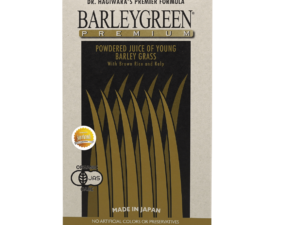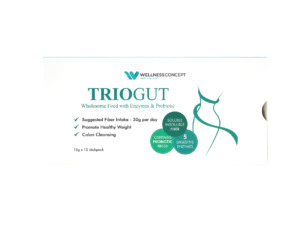Less than 10% of adults worldwide meet their daily nutritional fiber targets. While experts recommend 25–38 grams depending on gender, most people consume barely half that amount. This gap impacts everything from digestion to long-term disease prevention.
Modern diets often lack the plant diversity our ancestors relied on. Historical populations consumed up to 100 grams of fiber daily through whole grains, legumes, and seasonal produce. Today’s processed food habits leave many struggling to reach even basic recommendations.
The consequences are significant. Low dietary fiber intake correlates with higher risks of heart disease, diabetes, and gut-related disorders. Yet confusion persists about how much people truly need. Factors like activity levels, age, and existing health conditions all play critical roles.
This guide breaks down current research on optimal consumption. It explores practical ways to boost nutritional intake without drastic lifestyle changes. Readers will discover how to tailor their approach for improved energy, digestion, and overall wellness.
Key Takeaways
- Global fiber consumption falls 40–50% below recommended levels
- Ancestral diets contained 3–4 times more plant-based fiber
- Individual needs vary based on metabolism and health goals
- Chronic deficiencies increase disease risks over time
- Simple dietary swaps can bridge nutritional gaps effectively
What Is Dietary Fiber and Why It Matters

Click to 了解更多
While most people focus on counting calories or tracking macros, there’s one nutritional powerhouse that often gets overlooked. Dietary fiber—a unique carbohydrate our bodies can’t break down—plays surprising roles in maintaining health. Unlike sugars or starches, it passes through the digestive system mostly intact, acting like a multitasking wellness ally.
This nutritional hero comes in two main forms. Soluble fiber blends with water to form a gel that slows digestion, helping manage cholesterol and blood sugar spikes. Think of it as nature’s traffic controller for nutrients. On the other hand, insoluble fiber adds bulk to stool, keeping bowel movements regular and preventing constipation.
But fiber’s benefits go beyond basic digestion. It feeds the trillions of bacteria living in your gut—a community scientists call the microbiome. These microbes transform fiber into compounds that support immune function and reduce inflammation. Your morning oats or afternoon apple aren’t just filling snacks; they’re fuel for an entire ecosystem working to protect your health.
Modern food processing often strips away natural fiber content. Whole grains become refined flour, fruits turn into sugary juices, and vegetables get peeled for convenience. Prioritizing unprocessed plant foods helps restore this missing piece of the dietary puzzle, creating lasting benefits from breakfast to bedtime.
Recommended Daily Fiber Intake in Dietary Guidelines
Nutrition experts worldwide agree: plant-powered plates hold the key to meeting essential nutrient goals. Global dietary guidelines increasingly emphasize fiber-rich foods as foundational for long-term wellness. While exact numbers vary, most health authorities suggest adults aim for 25–38 grams daily, depending on age and activity levels.

The World Health Organization advises consuming at least five servings of fruits and vegetables daily. This aligns with research showing diverse plant sources provide balanced soluble and insoluble fibers. For instance, American recommendations pair this with whole grains and legumes to create meals that naturally meet targets.
| Country | Daily Recommendation | Primary Focus |
|---|---|---|
| United States | 25g (women) – 38g (men) | Whole food variety |
| United Kingdom | 30g (adults) | Grain integration |
| Australia | 25–30g (adults) | Legume consumption |
Children and older adults have adjusted targets reflecting their nutritional needs. Teens might require 20–25 grams, while seniors benefit from easier-to-digest options like steamed veggies or soft fruits. Dietary plans should prioritize gradual increases to prevent digestive discomfort.
Meeting these goals involves strategic choices. Adding chia seeds to breakfast, snacking on almonds, or choosing brown rice boosts intake effortlessly. Remember, guidelines represent minimums – newer studies suggest higher amounts may offer extra protection against modern health challenges.
Is 25 grams of fiber a day?
Scientific consensus reveals a sweet spot for plant-based nutrition. Landmark studies show consuming 25-35 grams daily helps maintain vital bodily functions while reducing disease risks. This range acts like a protective shield against modern health challenges.
- 15% lower mortality rates compared to low-consumption groups
- Enhanced blood sugar regulation in adults
- Improved cholesterol profiles within 6 weeks
A comprehensive analysis of 185 studies found optimal results begin at 25 grams. Those exceeding 30 grams saw additional advantages:
| Intake Level | Cardiovascular Protection | Diabetes Risk Reduction |
|---|---|---|
| 25g/day | 22% lower | 18% decrease |
| 35g/day | 31% lower | 26% decrease |
Individual needs vary based on body composition and activity. Larger individuals often require more, while seniors might focus on easier-to-digest sources. Starting with achievable targets prevents digestive discomfort.
Reaching these levels doesn’t require radical changes. Swapping white rice for brown versions adds 3 grams per cup. Adding a handful of almonds provides another 3.5 grams. Small, consistent choices create lasting impacts on wellness.
Top High-Fiber Foods to Boost Your Intake
Smart food choices transform fiber goals from challenging to achievable. Plant-based options deliver concentrated nutrition while satisfying taste buds. Let’s explore kitchen staples that pack the biggest punch per serving.
Legumes and Beans
Lentils lead the pack with 18 grams per cooked cup—enough to cover 72% of daily needs. Black and pinto beans follow closely, offering 15 grams alongside plant-based protein. These versatile ingredients work in curries, salads, and soups for global flavor profiles.
Fruits, Vegetables, and Nuts

Click to 了解更多
Raspberries shine with 8 grams per cup, while avocados provide creamy texture and 5 grams per half fruit. Almonds deliver crunch and 6 grams per handful. For better absorption of nutrients, pair these with healthy fats like olive oil or yogurt.
Whole Grains and Seeds
Chia seeds offer 10 grams in just two tablespoons—perfect for overnight pudding or smoothies. Oats supply 5 grams per cooked cup plus cholesterol-fighting beta-glucan. These ingredients adapt easily to breakfast bowls or baking recipes.
Small additions create big impacts. Sprinkle flaxseeds on cereal, snack on edamame, or blend white beans into dips. Consistency matters more than perfection when building lasting dietary habits.
Health Benefits of a High-Fiber Diet
The transformative power of plant-based nutrition reveals itself through remarkable protective effects. Research consistently shows diets rich in whole foods significantly lower risks for modern health challenges while enhancing overall wellness.
Heart disease prevention stands out as a key advantage. Soluble fibers bind to cholesterol particles, helping remove them from the bloodstream. This process supports healthier blood pressure and reduces arterial plaque formation by up to 15%.
For metabolic health, fiber acts like a natural regulator. It slows sugar absorption, preventing dangerous spikes that strain the pancreas. Studies demonstrate a 23% lower type 2 diabetes risk among regular consumers of legumes and whole grains.
- Colorectal cancer rates drop 17% with adequate intake
- Anti-inflammatory effects protect against arthritis flare-ups
- 15% lower mortality risk across all age groups
Gut microbes thrive on diverse plant fibers, producing compounds that strengthen immune responses. This symbiotic relationship explains why populations eating traditional diets experience fewer chronic diseases.
Weight management becomes simpler through increased satiety. High-fiber meals keep people fuller longer, naturally reducing calorie intake without restrictive measures. Over time, this supports sustainable health goals.
Emerging research connects fiber-rich diets to reduced breast and prostate cancer risks. While mechanisms are still being studied, the correlation highlights broader protective health benefits beyond digestive wellness.
How Fiber Affects Digestion and Gut Health
Your gut hosts a bustling metropolis of microorganisms working around the clock. These tiny residents thrive on dietary fiber, transforming it into compounds that influence everything from immunity to mood. The relationship between plant-based nutrition and microbial activity forms the foundation of digestive wellness.

The Role of Gut Microbiota
Beneficial bacteria feast on fermentable fibers, producing substances that strengthen intestinal walls. This microbial workforce helps regulate inflammation and crowd out harmful pathogens. Diverse plant sources create resilient communities – think colorful veggies paired with whole grains or lentils.
Short-Chain Fatty Acids and Colon Health
Fiber fermentation generates three key defenders: butyrate, propionate, and acetate. Butyrate acts as the colon’s maintenance crew, repairing cells and reducing cancer risks. Propionate teams up with the liver to manage cholesterol, while acetate patrols the bloodstream calming inflammation.
Timing matters for maximizing these benefits. Research suggests spreading fiber intake throughout the day supports steady microbial activity. A morning chia pudding, afternoon veggie snack, and evening bean salad work better than one large serving.
These processes explain why high-fiber diets correlate with sharper mental clarity and stable energy levels. Your food choices don’t just feed you – they nourish an entire ecosystem dedicated to your vitality.
Soluble vs. Insoluble Fiber: Understanding the Difference
Navigating the world of dietary fiber reveals two key players with distinct roles. While both types support wellness, they operate differently within the body to deliver unique advantages.
Soluble Fiber Explained
This gel-forming variety dissolves in water, creating a viscous substance that slows digestion. Oat beta-glucan, a powerful type of soluble fiber, binds to bile acids to help lower cholesterol levels. Regular consumption of oats, apples, or flaxseeds can stabilize blood sugar while promoting lasting fullness.
Benefits of Insoluble Fiber
Found in wheat bran and crunchy vegetables, this type adds bulk to stool for smoother elimination. It acts like nature’s broom, sweeping waste through the digestive tract efficiently. Whole grains and nuts provide texture while supporting regular bowel patterns.
Together, these foods create complementary effects. Soluble varieties address metabolic concerns, while insoluble types maintain digestive rhythm. Including both in meals helps the body achieve balanced nutrition without drastic changes.
Practical combinations work best. Top oatmeal (soluble) with almonds (insoluble), or blend lentils into veggie stir-fries. This synergy turns everyday fiber sources into tools for sustained vitality.
FAQ
How does soluble fiber support heart health?
Soluble fiber binds to cholesterol in the digestive system, helping lower LDL (“bad”) levels. Foods like oats, apples, and black beans are rich in this nutrient, promoting better cardiovascular function over time.
What role do chia seeds play in meeting daily needs?
Just one ounce of chia seeds provides nearly 10 grams of dietary fiber. Adding them to smoothies, yogurt, or salads boosts intake effortlessly while supplying omega-3 fatty acids for added benefits.
Can a high-fiber diet reduce cancer risk?
A> Studies suggest diets rich in whole grains, legumes, and vegetables may lower colon cancer risk. Fiber aids digestion, reduces inflammation, and supports gut microbiota linked to long-term health.
Why are whole grains better than refined options?
Whole grains retain their bran and germ, offering more nutrients and fiber per serving. For example, quinoa delivers 5 grams per cooked cup, while refined grains lose up to 75% of their fiber during processing.
How does fiber stabilize blood sugar levels?
Soluble fiber slows carbohydrate absorption, preventing spikes. Foods like lentils, berries, and barley help maintain steady glucose levels, benefiting those managing diabetes or insulin resistance.
Are plant-based snacks effective for boosting intake?
Yes! Almonds (3.5 grams per ounce), edamame (8 grams per half cup), or roasted chickpeas make satisfying snacks. Pairing them with fruits or veggies creates balanced, fiber-rich options.
What’s the connection between fiber and gut microbiota?
Gut bacteria ferment certain fibers, producing short-chain fatty acids like butyrate. These compounds strengthen the colon lining, reduce inflammation, and enhance immune responses.
How do dietary guidelines vary by age and gender?
Women under 50 should aim for 25 grams daily, while men need 38 grams. After 50, recommendations drop slightly to 21 grams (women) and 30 grams (men) due to reduced calorie needs.






